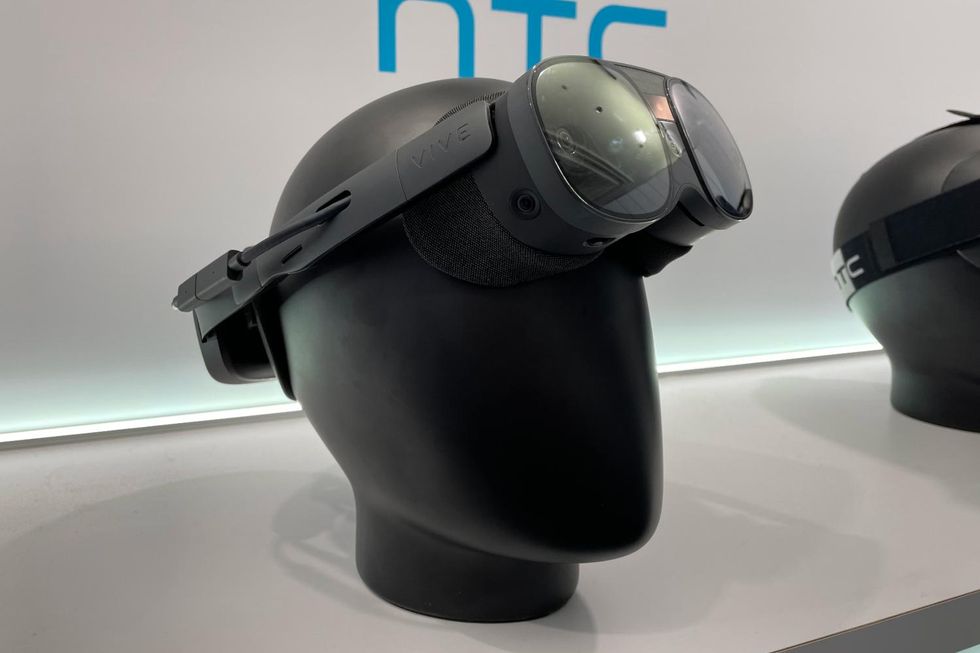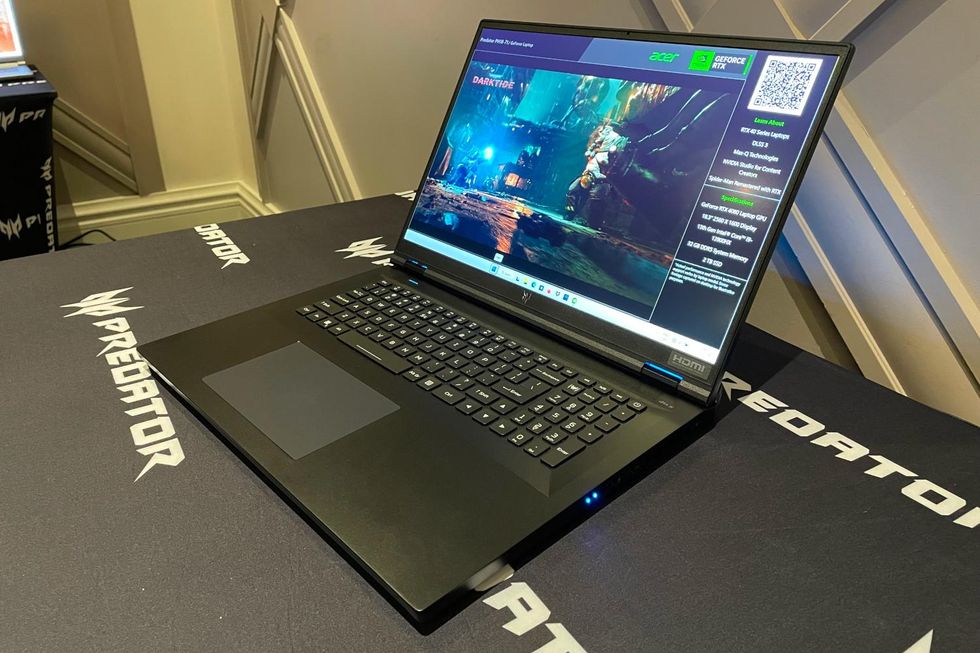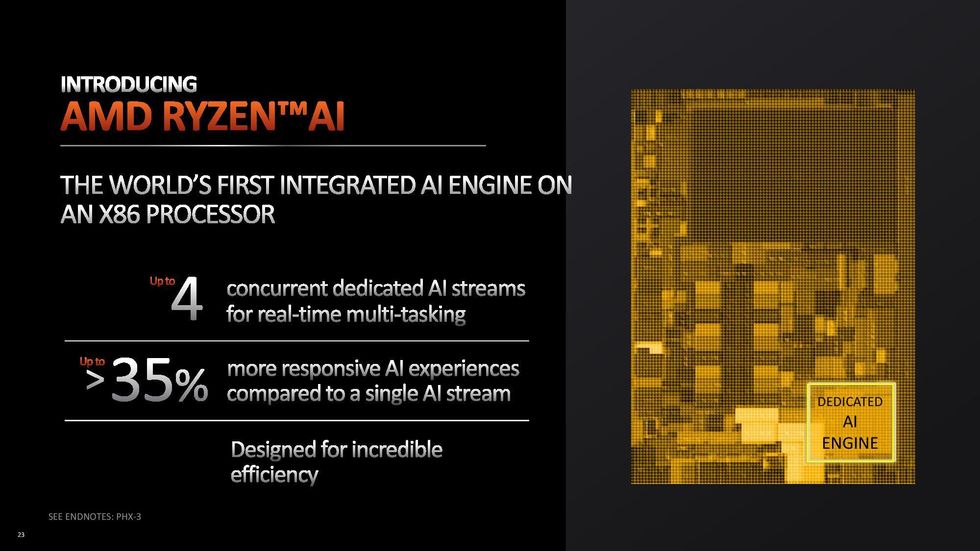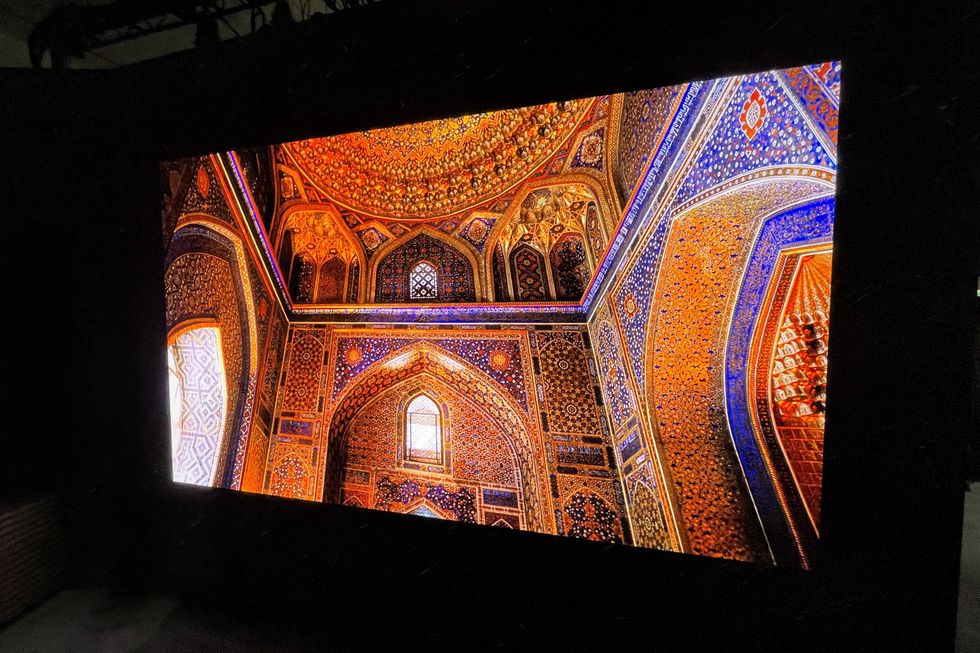

| Date | 9th, Jan 2023 |
|---|
CES 2023 was a successful return to form for the world’s biggest consumer electronics show after two difficult years. The time away has clearly changed the vibe of the show, which is a tad less glamorous than before. Some companies shifted to new locations, or to smaller booths, giving scrappy upstarts a chance to grab the spotlight.
 The mixed-reality HTC Vive XR Elite supports video passthrough.Matthew S. Smith
The mixed-reality HTC Vive XR Elite supports video passthrough.Matthew S. Smith
In an ironic twist, CES 2023’s grand return to in-person gathering was marked by technologies that could make such gatherings obsolete.
The most impressive was HTC’s Vive XR Elite, a US $1,099 mixed-reality headset that weighs just 625 grams with battery and less than 300 grams without. My demo of the headset left me impressed; it offers the fidelity of a great virtual-reality headset with mixed-reality video passthrough, all in a headset smaller than the Meta Quest 2.
HTC’s excellent headset was flanked by dozens of smaller announcements and demos. Magic Leap was present, showing the Magic Leap 2 (which was released in September 2022). And the show floor was filled with impressive accessories for AR/VR headsets, such as Owo’s haptic suit. This $425 device looks like an athletic shirt but contains 30 electrical-contact patches to create virtual sensations like skydiving or a dagger wound. It’s not for everyone, I’d wager, but the range of effects is remarkable for such a thin, lightweight suit.
 The Acer Predator Helios 18 (as in 18-inch display) is one of several powerful—and huge—laptops shown at CES 2023.Matthew S. Smith
The Acer Predator Helios 18 (as in 18-inch display) is one of several powerful—and huge—laptops shown at CES 2023.Matthew S. Smith
CES is always filled with new consumer PC hardware, but 2023 was an especially packed year. Nvidia brought its new RTX 40-Series mobile chips which, in addition to improving frame rates for 3D applications, can generate entirely new frames with AI.
Intel and AMD, meanwhile, continued to trade blows with absurdly powerful laptop processors. Intel’s latest have up to 24 cores and 32 threads, while AMD offers up to 16 cores and 32 threads. The fastest mobile processors can handily defeat top-tier desktop processors just a few years old. AMD also introduced Ryzen AI, the “first dedicated artificial intelligence hardware in an x86 processor.”
 AMD’s Ryzen 7040 series processors have a dedicated AI engine.AMD
AMD’s Ryzen 7040 series processors have a dedicated AI engine.AMD
AMD’s Ryzen AI processor was announced with support for Microsoft’s Studio Effects, a set of web-conferencing filters and features. It includes eye correction, which uses AI to make it appear as if you’re looking toward the camera even when you’re not. Nvidia showed a similar feature in its own Nvidia Broadcast software.
The show also debuted new text-to-speech and translation apps, an app that uses a neural radiance field (NeRF) to 3D-scan objects from smartphone phones and video, and more. Spectrum’s tour of the show’s AI tech has the details.
 Samsung’s 8K NEO QLED uses micro-LED technology.Matthew S. Smith
Samsung’s 8K NEO QLED uses micro-LED technology.Matthew S. Smith
Samsung remained committed to pushing 8K televisions at CES 2023. Samsung showed its newest NEO quantum-dot LED (QLED) 8K displays, including microLED displays up to 140 inches. LG took a different approach, highlighting a 97-inch 4K OLED television with a surprise twist: It’s wire-free (aside from the power cord), with video beamed to the display from a device roughly the size of a shoebox.
But it’s arguably computer displays that saw the most practical innovation. LG showed off the LG Ultragear OLED gaming monitor, the first 27-inch OLED monitor under US $1,000, and a 42-inch OLED monitor that can flex between flat and curved with the touch of a button. Samsung doubled down on its super-ultrawide displays, bringing new 49-inch QD-OLED and 57-inch mini-LED monitors.
Asus brought a glasses-free 3D OLED laptop display called Spatial Vision. It’s similar to Acer’s SpatialLabs but with an OLED panel instead of LCD, delivering better contrast and depth. The 3D effect is convincing and easier on the eyes than past incarnations.
